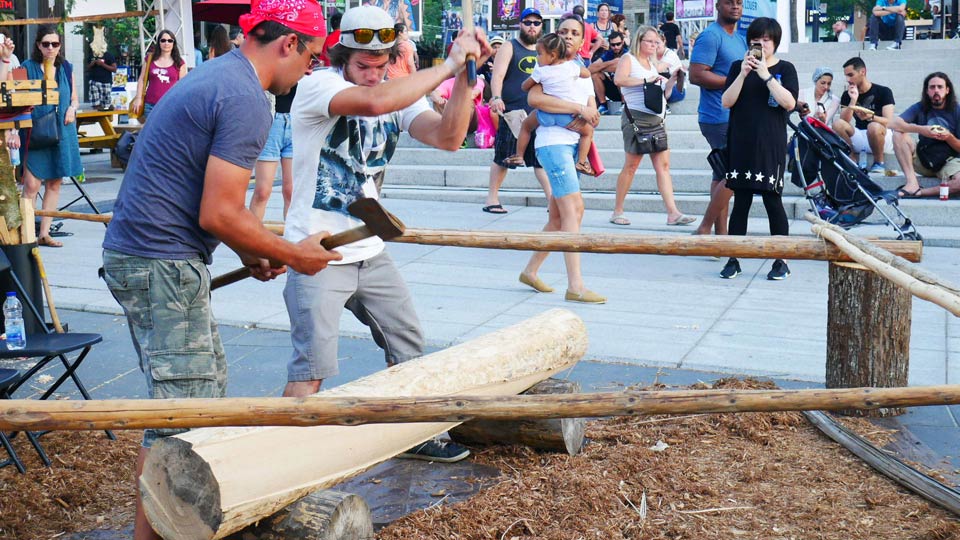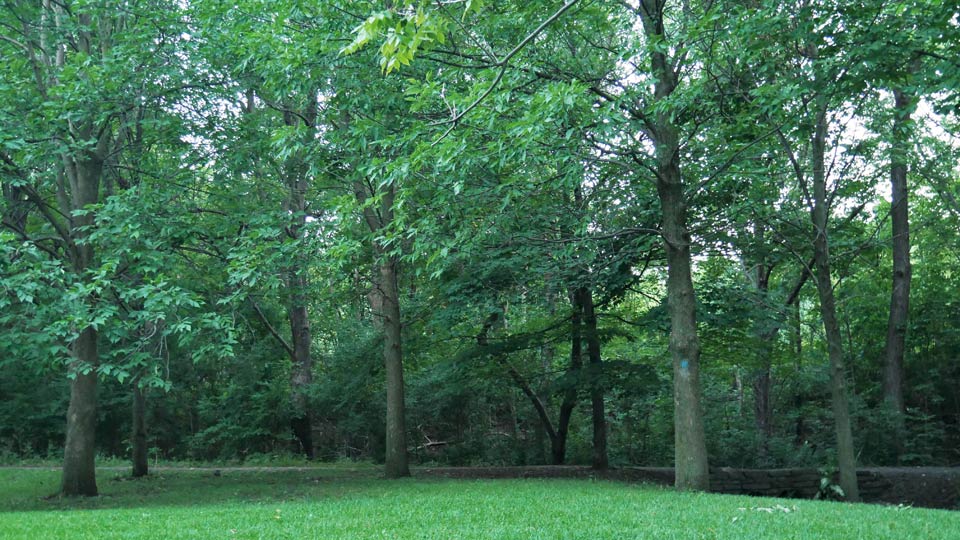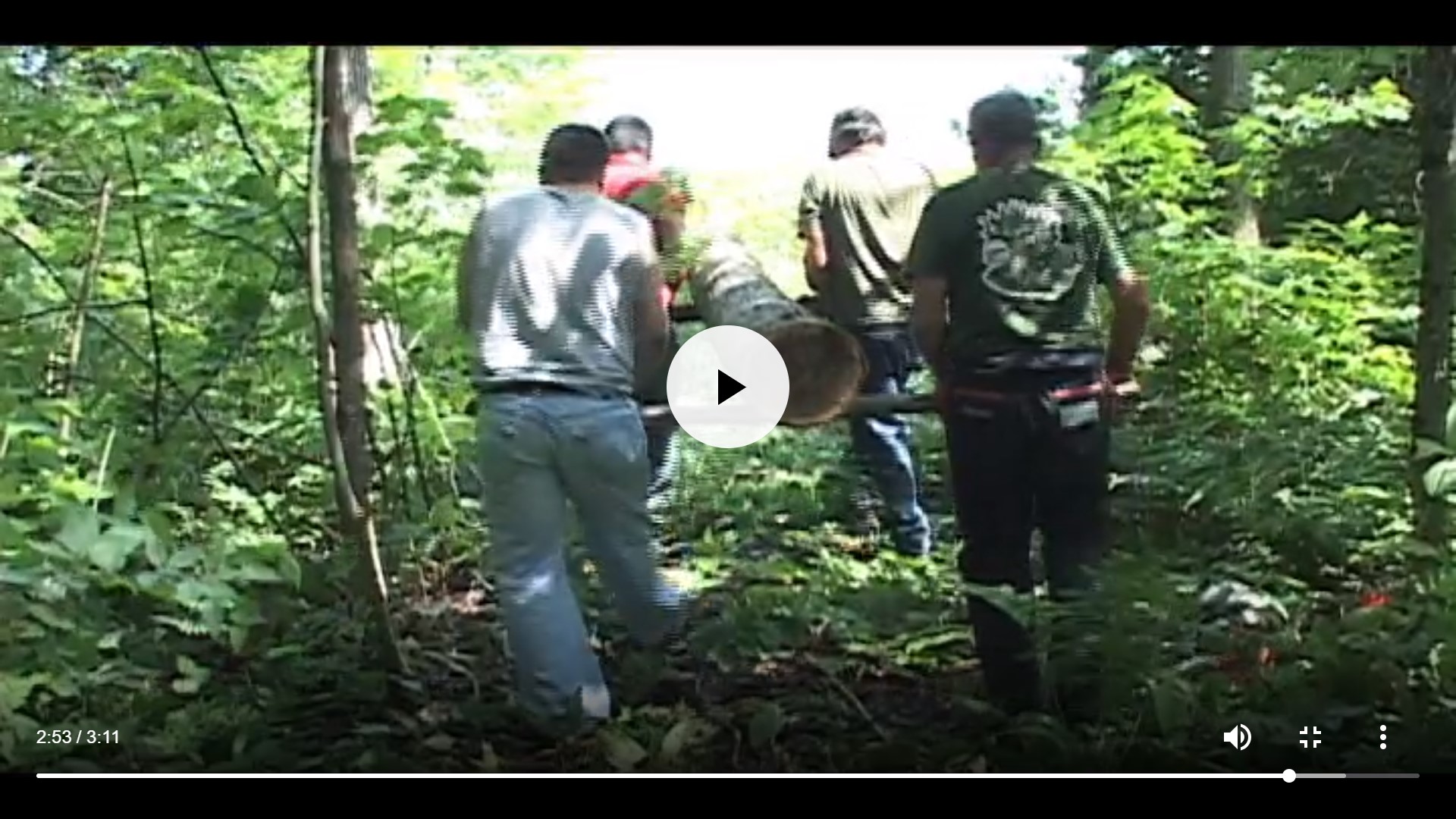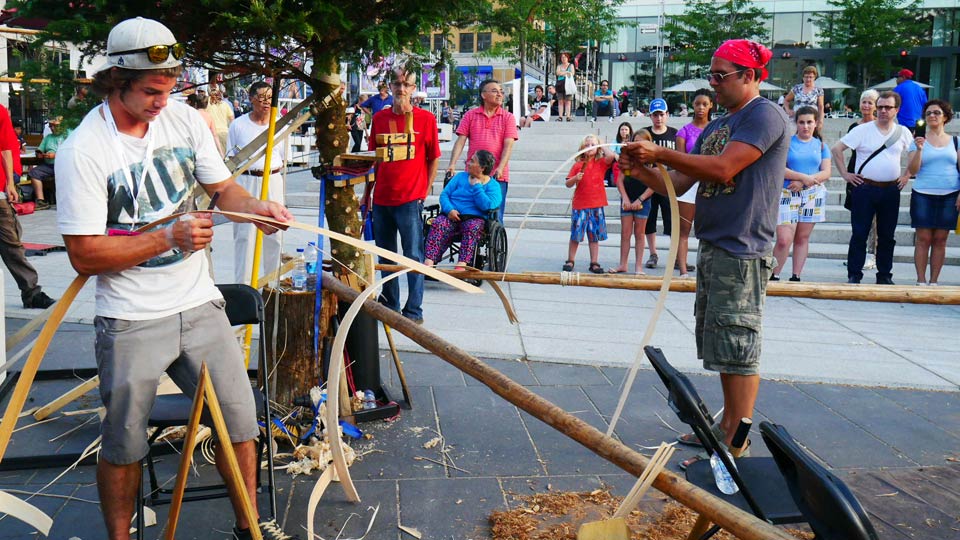Keep exploring here
LAND ~ Traditional practice
 Français
Français
Luc Gauthier Nolett and Kenny Panadis pounding black ash at the First Peoples Festival in Montreal, summer 2016
The black ash: a sacred tree for the Wabanaki
«According to the legend, the Wabanakiak are born from the ash. It is our sacred tree, especially the black ash. There are three kinds: red, black and white. We pound the black ash and use it to weave baskets. For us, it’s a sacred tree.» Michel Durand Nolett

Ash trees in the Mont-Royal parc, Montreal.
Born from the ash tree: Abenaki creation story
Various versions of the story exist. According to most tales, Gluskabe or Glooskap is not a god, but a cultural hero, a trickster who had supernatural powers and used them to manipulate the world, making it more habitable for humans. The video below tells the creation story in Western Abenaki language. It was made for the graphic novel Dawn Land. It is not directly part of Circle of Voices but it is displayed here because it constitutes insightful audio-visual material.
Pounding and splitting black ash
Luc: «We use the ash for handicrafts, for us nowadays. I am one of the last who takes care of the transmission of this little part of the culture that we still know, that we like to pass on. Yes, I’m responsible for that, so I’m in charge of going to get the wood, identifying it, cutting it down, and coming back here to deal with the pounding, and the passing on of this knowledge.» Kenny: «It’s really an art to pound the ash. You really have to…If you’re not calm, you won’t be able to pound. You really have to be calm, otherwise it won’t work. You have to learn with the other person. When you are able to pound, when you can listen to the sound because if it does ‘tactac’ it doesn’t work. It has to be like ‘tac tac tac tac tac’. For sure it can be dangerous, some people find it dangerous. But once you’re used to it, you know it, as soon as you hear a ‘tactac’ you take your axe away.»
The challenge of keeping the traditional practice alive in the community
«I was at the Band council, we were talking about black ash with Clément M’Sadoques. We suddenly realized that we were the only people in the community who knew about black ash. It's Luc who was the first one, to show him how to choose your black ash, and first, how do you identify it in the woods? At the beginning of the 20th century, up to the 1950's, many many farmers around here cut down all black ash trees, so that the people from Odanak don't get any. Because the people in Odanak were doing basketry. My grandmother, my great-grandmother were weaving baskets during the winter, and with the arrival of spring, they would take the train and go to Ogunquit et York Beach. They were traveling to the United States, where they would buy dresses and other things. They were absolute trendsetters compared to women around here. From there, people started to be jealous that: "the savages were better dressed than us".»
Michel has previously collaborated on a multimedia project about black ash basketry. The video below is extracted from there and was realized by La Boite Rouge Vif.

What happens next? Go over here if you're curious to learn more about Abenaki basketry!

Luc Gauthier Nolett and Kenny Panadis splitting black ash at the First Peoples Festival in Montreal, summer 2016
Enviromental threat

Local advertising in the office of the city of Montreal
The Emerald Ash Borer is an invasive insect which arrived from Asia around 2002. Since its arrival, the beetle has caused a massive destruction of ash trees in North America, and its spread has been accelerated by the transportation of infected firewood and logs. As Neuman and Neptune explain: «adult beetles lay their eggs on the bark of the tree, and the hatching larvae bore into the tree to feed on the inner bark. As the larvae feed, they create “S”-shaped galleries, which eventually girdle the tree, effectively killing the tree from the inside out.»
